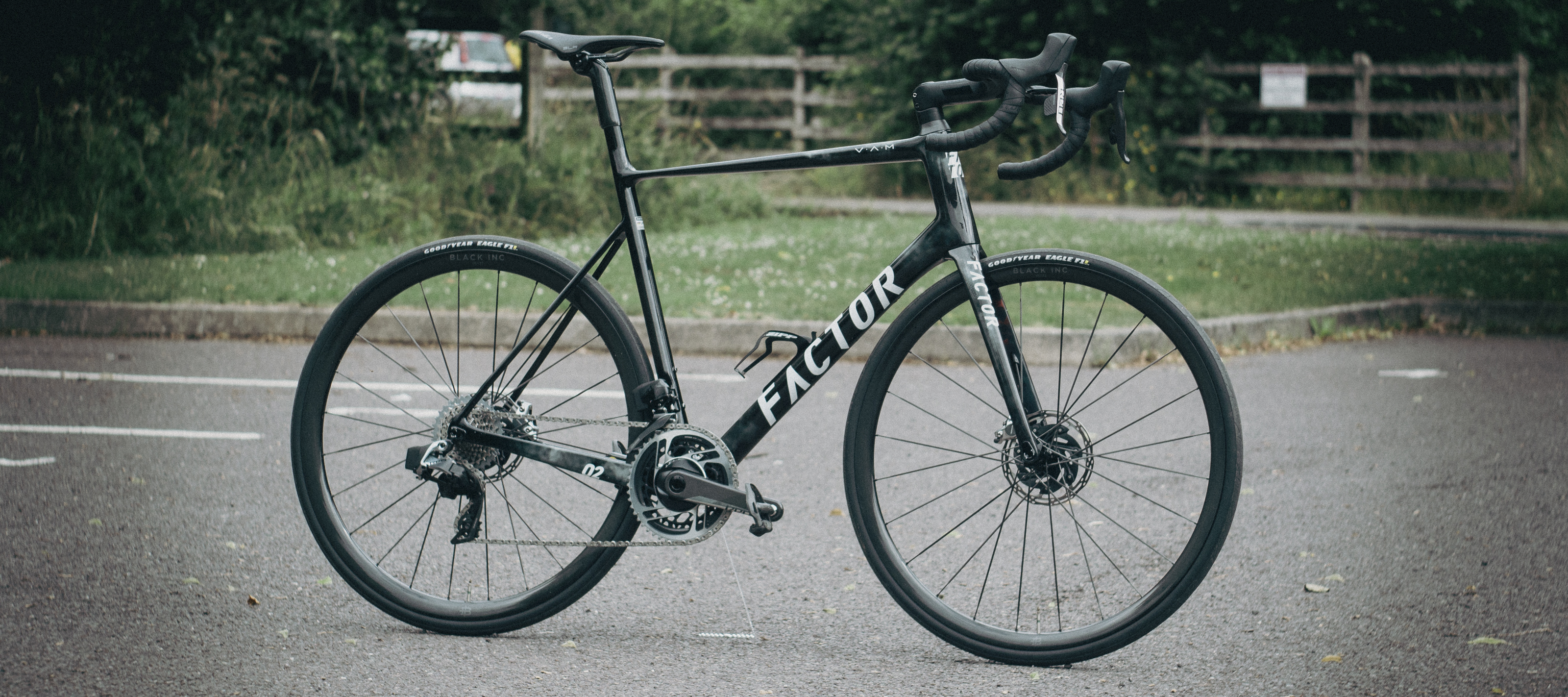Cyclingnews Verdict
A dream featherweight bike with great wheels and good configuration options at purchase, at a price that matches its competitors. Most people would be better served by the more aero Ostro, but that won't take away from the impressive ride quality
Pros
- +
6.7kg ready to ride (58cm)
- +
Aero profiling with racy geometry
- +
Stunning one-piece bar/stem
- +
Comfortable yet responsive ride
- +
Ample bar/stem and seatmast fit configuration at purchase
Cons
- -
No power meter (on this model)
- -
I struggled to get along with the stock tyres
- -
Build quality issues
You can trust Cyclingnews
Price as tested: £11,800 / $11,799 / €11,349 / AU$18,990
Size: 58cm
Weight: 6.7kg (with pedals and bottle cage)
Groupset: SRAM Red eTap AXS
Wheels: Black Inc 28//33
Bar/stem: Black Inc Integrated Barstem (40cm x 130mm)
Saddle: Selle Italia SLR Boost Superflow
The Factor O2 VAM was launched at the 2023 Tour de France, a few weeks after we spotted one with Simon Clarke's name on it at the Israel Premier-Tech team hotel at the Grand Départ in Bilbao.
It was immediately evident that it was a lightweight bike, following in the footsteps of the previous O2 VAM. The 'VAM' suffix refers to the term Vertical Ascent in Metres, a widely known term that covers how quickly someone ascends a hill. It wasn't a thoroughbred lightweight bike though, it had been given an aero makeover to more closely resemble the brand's more aero-aligned (but by no means aero-only) Ostro VAM
With the Ostro, we all thought Factor had combined its aero and lightweight race models into one. Factor's own website says it can "easily be built up to below the UCI 6.8kg weight limit," so the launch of the lightweight, semi-aero O2 VAM was an unexpected one.
At its launch, Factor said that it means its pro riders – Israel Premier-Tech – can have a 6.8kg bike with all of the race day necessities such as a transponder, race number, computer mount, bottle cages and so on. What's more, it says the O2 VAM is only five watts slower than the Ostro VAM in a wind tunnel.
A 54cm Factor O2 VAM can tip the scales at just 6.4kg off the shelf with Dura-Ace Di2 spec, so Factor claims, making an exciting prospect for riders like you and me who aren't bound by the sport's governing body and its rulebook. z, my 58cm test bike with SRAM Red tipped the scales at 6.7kg with a pair of Ultegra pedals and a single bottle cage.
Even though we all know that aerodynamics makes a much greater difference to speed than a few hundred grams on all but the steepest of terrain, there's no denying that lightweight bikes are fun to ride, with a highly responsive ride and often an urgency to their acceleration, so with that in mind, when the offer to test ride the new bike landed in my inbox and with an upcoming trip to the Alps on my agenda, I jumped at the chance to put the O2 Vam through its paces.
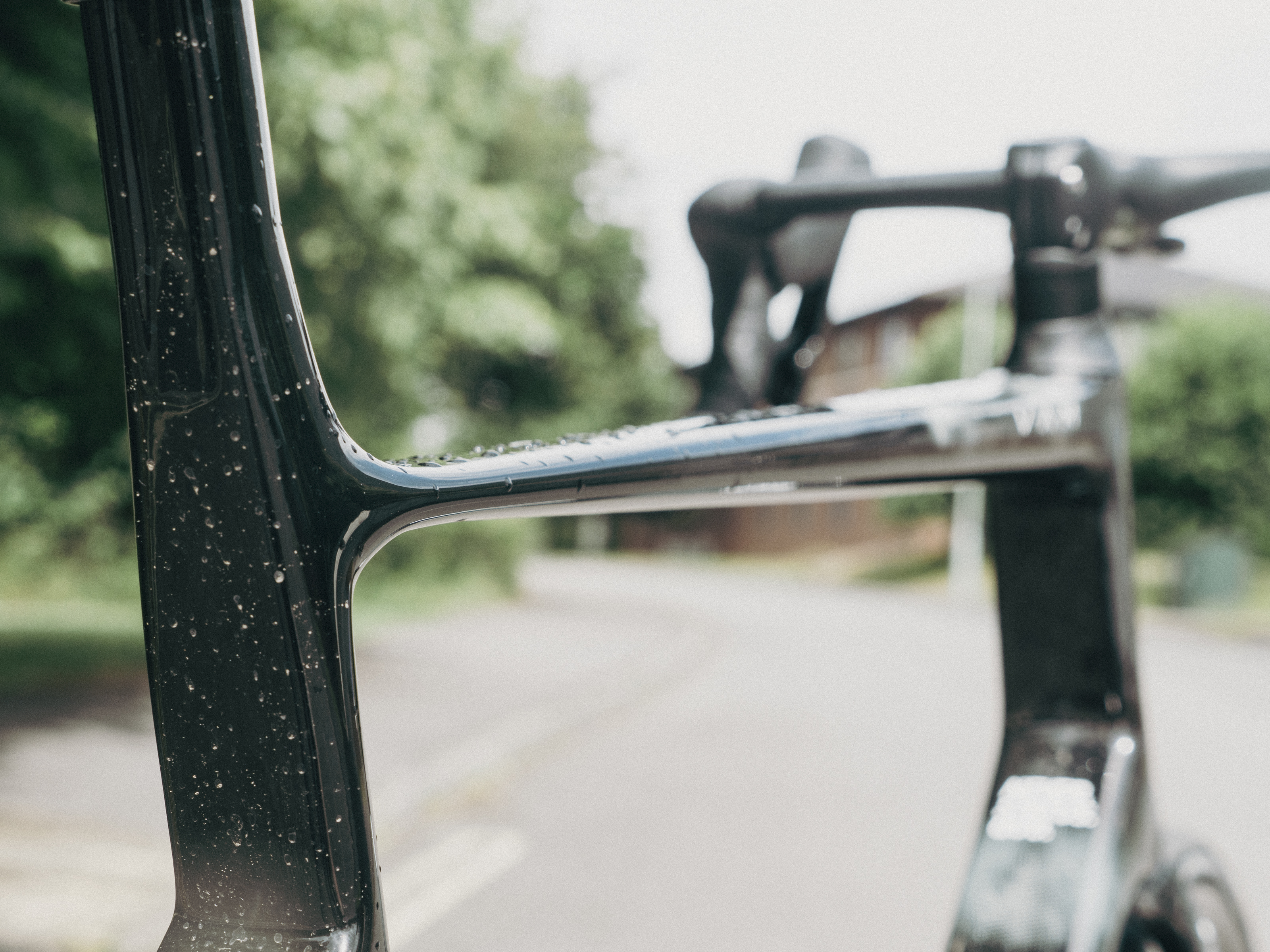
Design and specifications
Despite having quite a few aero touches, its shallow tubes and wheels make it immediately obvious that the Factor O2 VAM is a lightweight climbing bike.
The top tube gets thinner towards the back of the bike and finishes at approximately 1cm thick, clearly taking advantage of the UCI's updated rules. Some people I've spoken to dislike this aesthetic, but I really like it. It's different to the cut-paste bike design you get these days and it gives a clue to the bike's lightweight intentions.
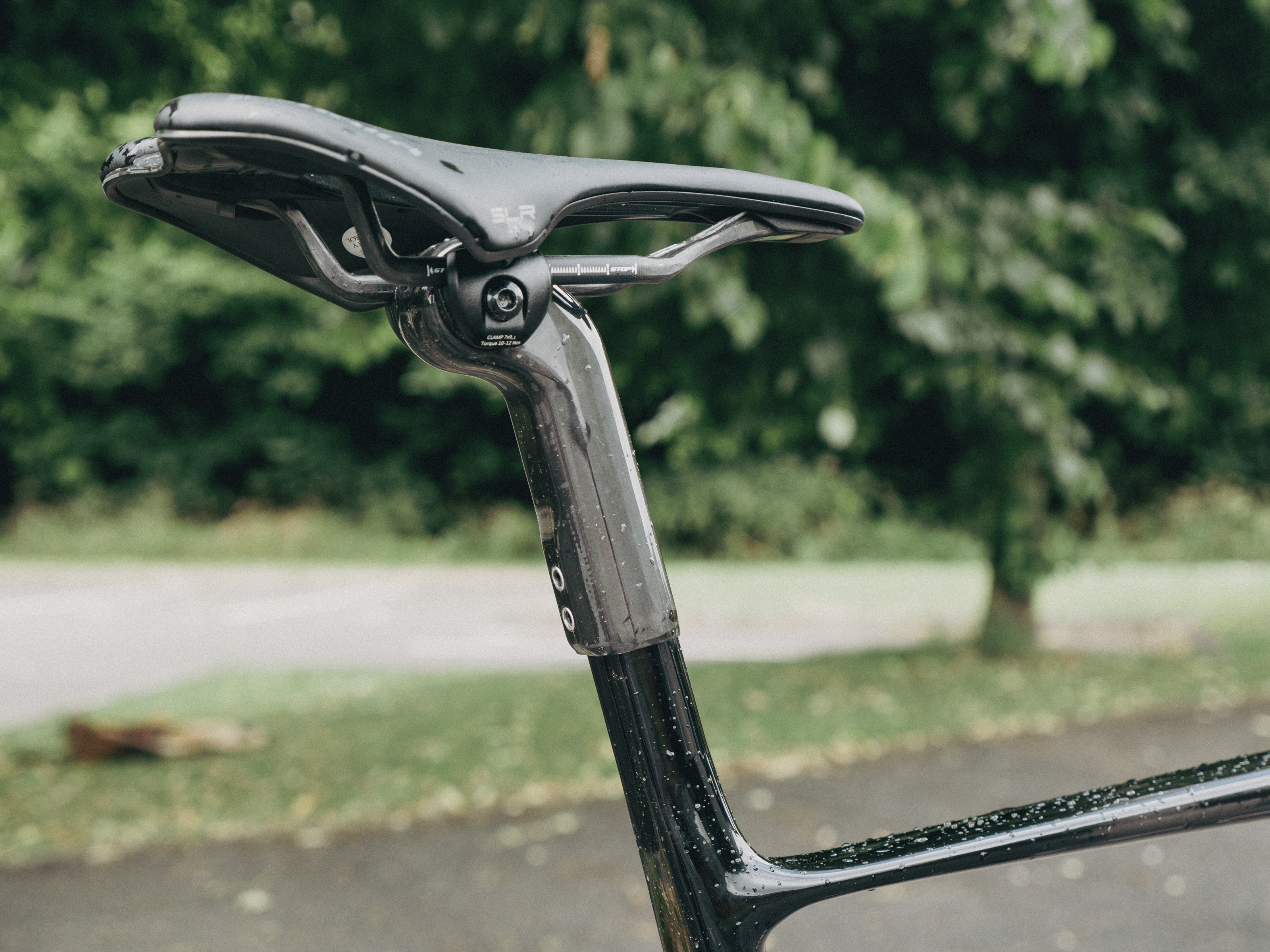
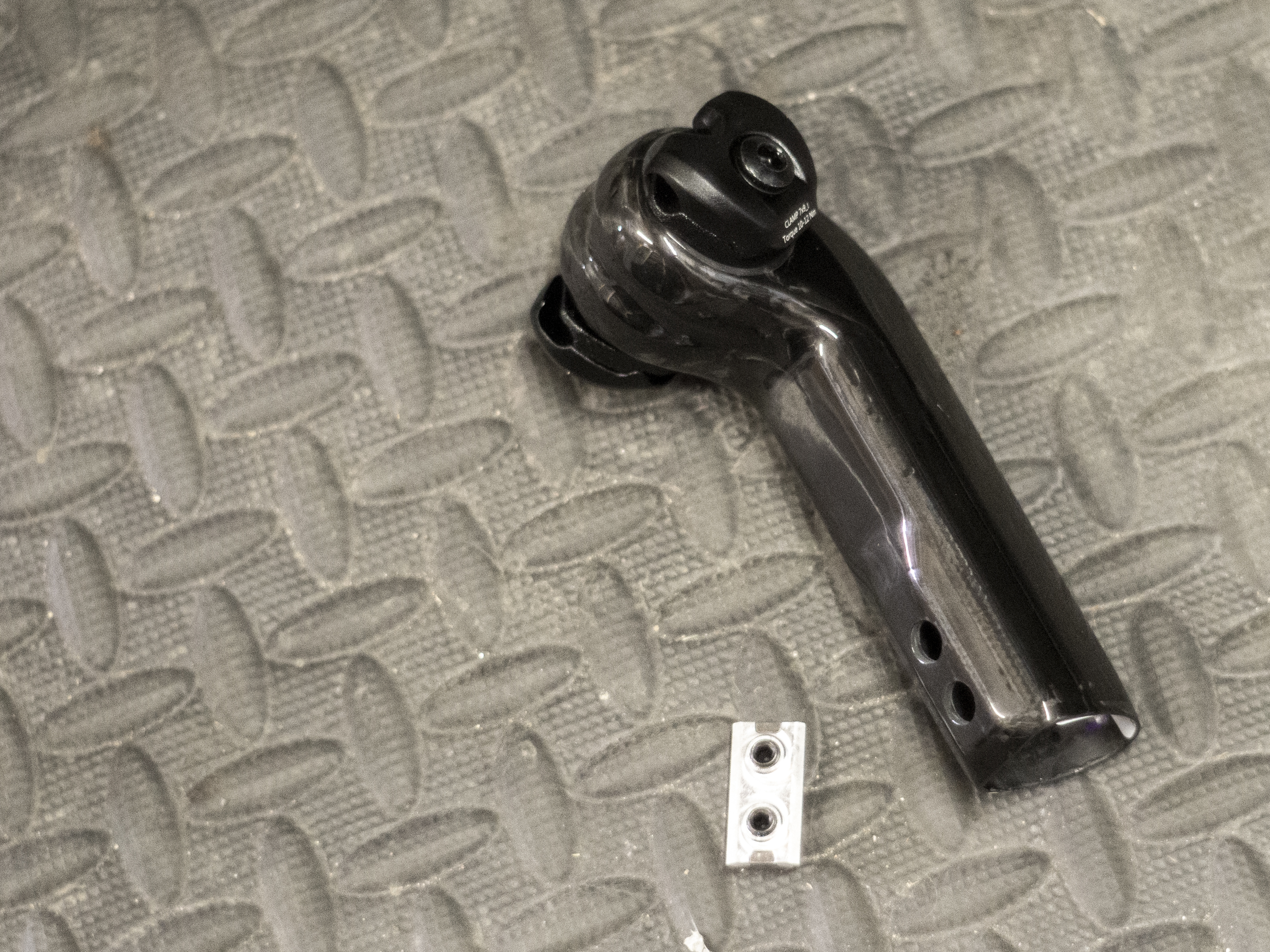
The other standout feature is the use of a seat 'mast' with a topper, rather than a traditional seat tube and seatpost. Again, despite protests from the crowds, I've never really had a problem with these. It was fine on my own 2016 Trek Emonda SLR, it was fine on the 2020 Giant TCR Advanced Pro and it's fine here. It's not a new feature but it's one that continues to crop up on the lightest bikes around.
I ride a 58cm frame and the bike fitted into my Evoc Road Bike Bag Pro bike box with a few centimetres to spare, albeit I did need to remove the saddle and the topper. If you're any taller than me, you might have issues. I'm aware the resale value of the bike could be affected if you cut down the seatmast for saddle height reasons, but as long as you buy the correct frame size, I don't think anyone will need to. When buying, you get the choice of six sizes spanning short, medium and tall, with zero or 25mm setback so there's more than enough room for adjustment.
The clamp that holds the seat mast in place is impressive. It's small, weighs just a few grams, and it's made up of two magnetic pieces that are held together (and pushed apart) by two grub screws. This expander sits in a groove between the seat mast and the topper, and the screws are accessed through holes drilled in the topper. The seatmast itself is incredibly thin, so care should be taken not to over torque these bolts, especially given their low (for seat posts) torque rating of 3m. I had no issues with the saddle height slipping in all my testing.
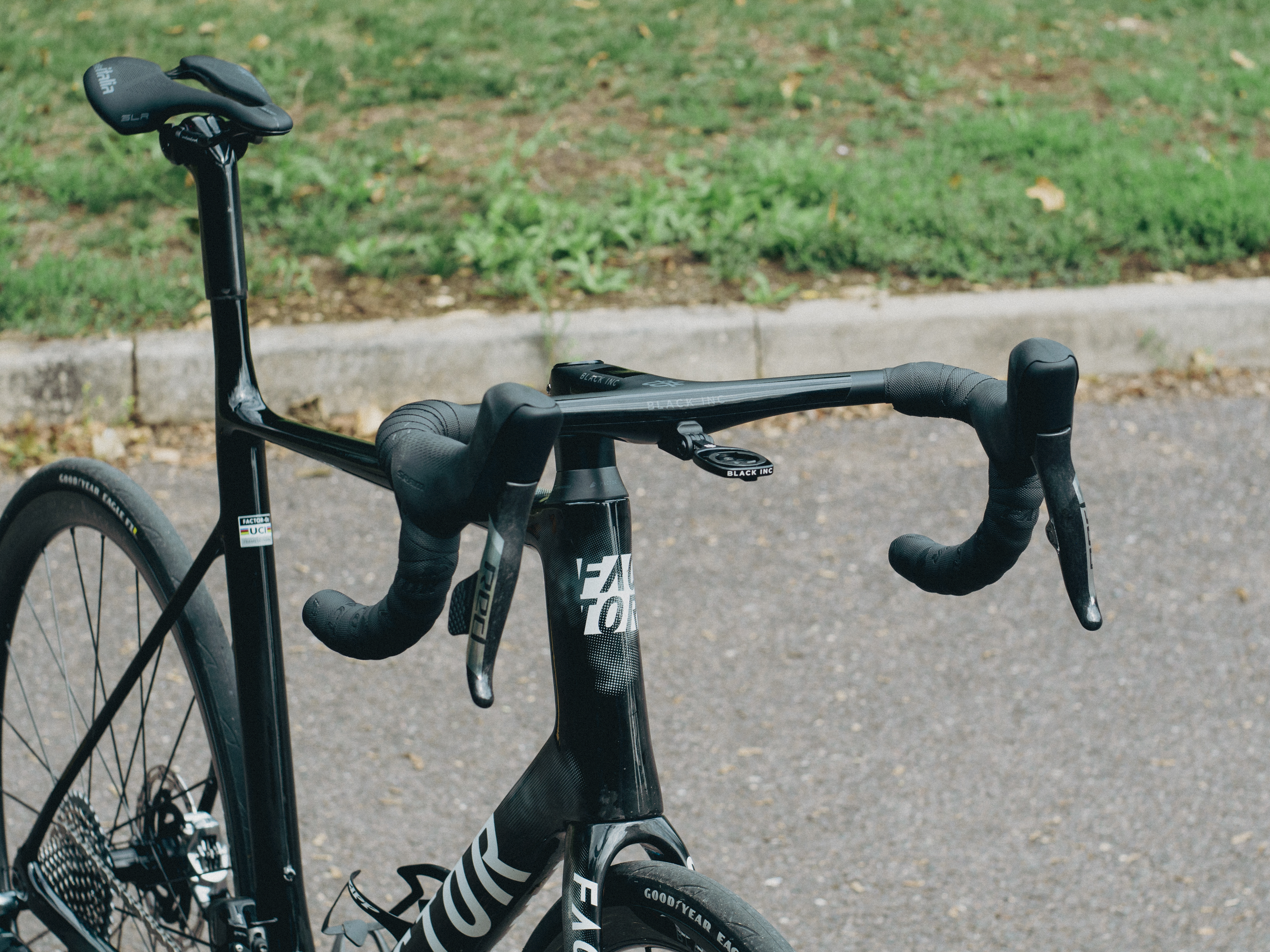
Aesthetically, overall, I really like the O2 VAM. The sleek tubes, semi-aero touches and the 'storm grey' finish all combine to create a clean, modern design without being dull or a replica of everything else on the market.

The only thing I didn't really like is the way the seat tube steps rearward to form the seat stays. A personal preference, I'll admit, but to me it looks almost unfinished.
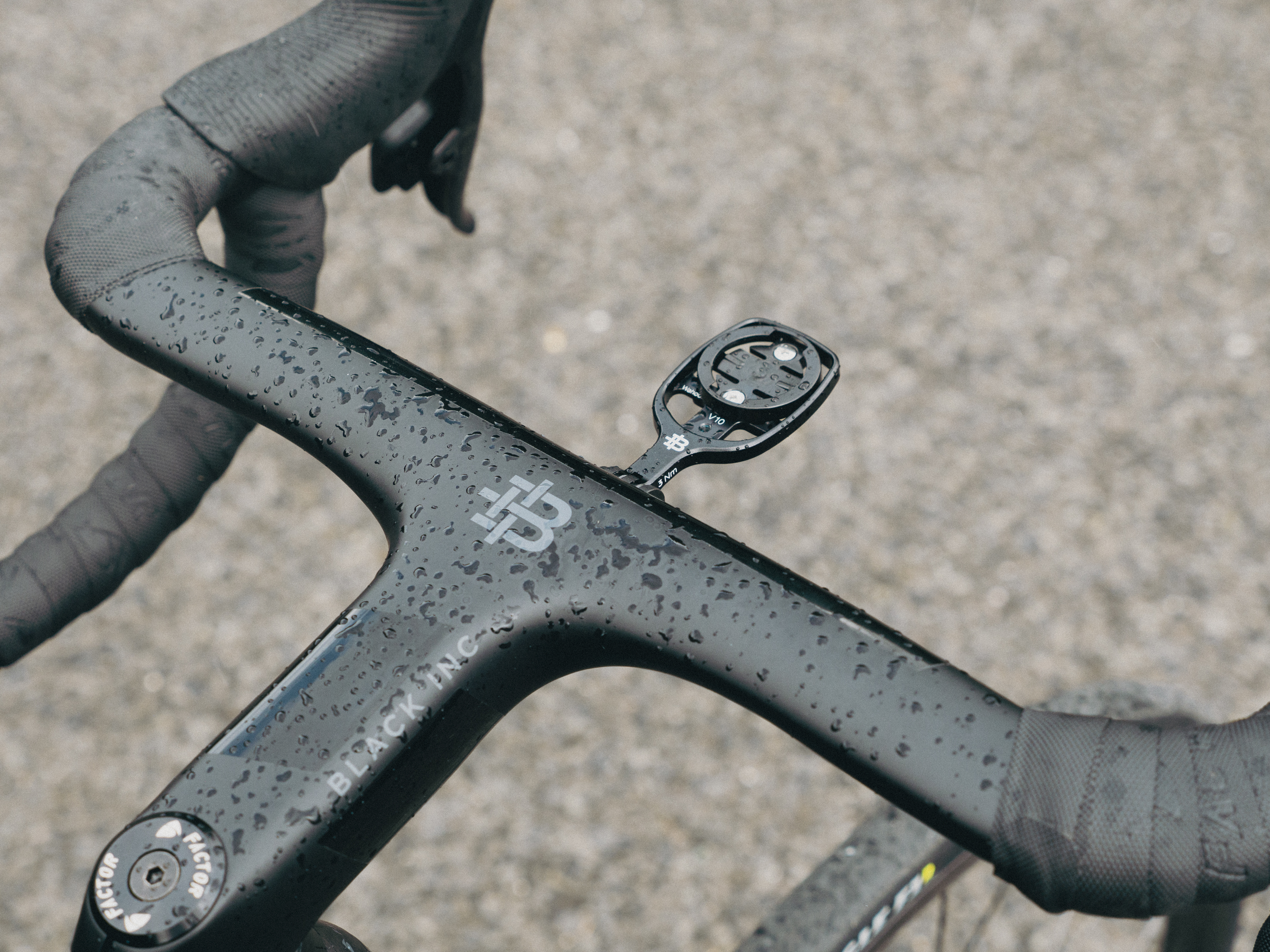
Meanwhile, I absolutely loved the one-piece Black-Inc bar/stem cockpit. The narrow width (40cm with a slight flare), long stem and shallow cross-section were on the receiving end of positive remarks from numerous friends and colleagues. They were comfortable to hold, keep all cables hidden from the wind, and are stiff enough that I don't feel like they sap power from sprints. Impressively, these can be specced at the point of purchase between 38cm and 44cm wide, with a 90-130mm stem length. This will save the common hassle of having to buy a bike with the wrong cockpit and then swap it out at your own expense for something that fits.
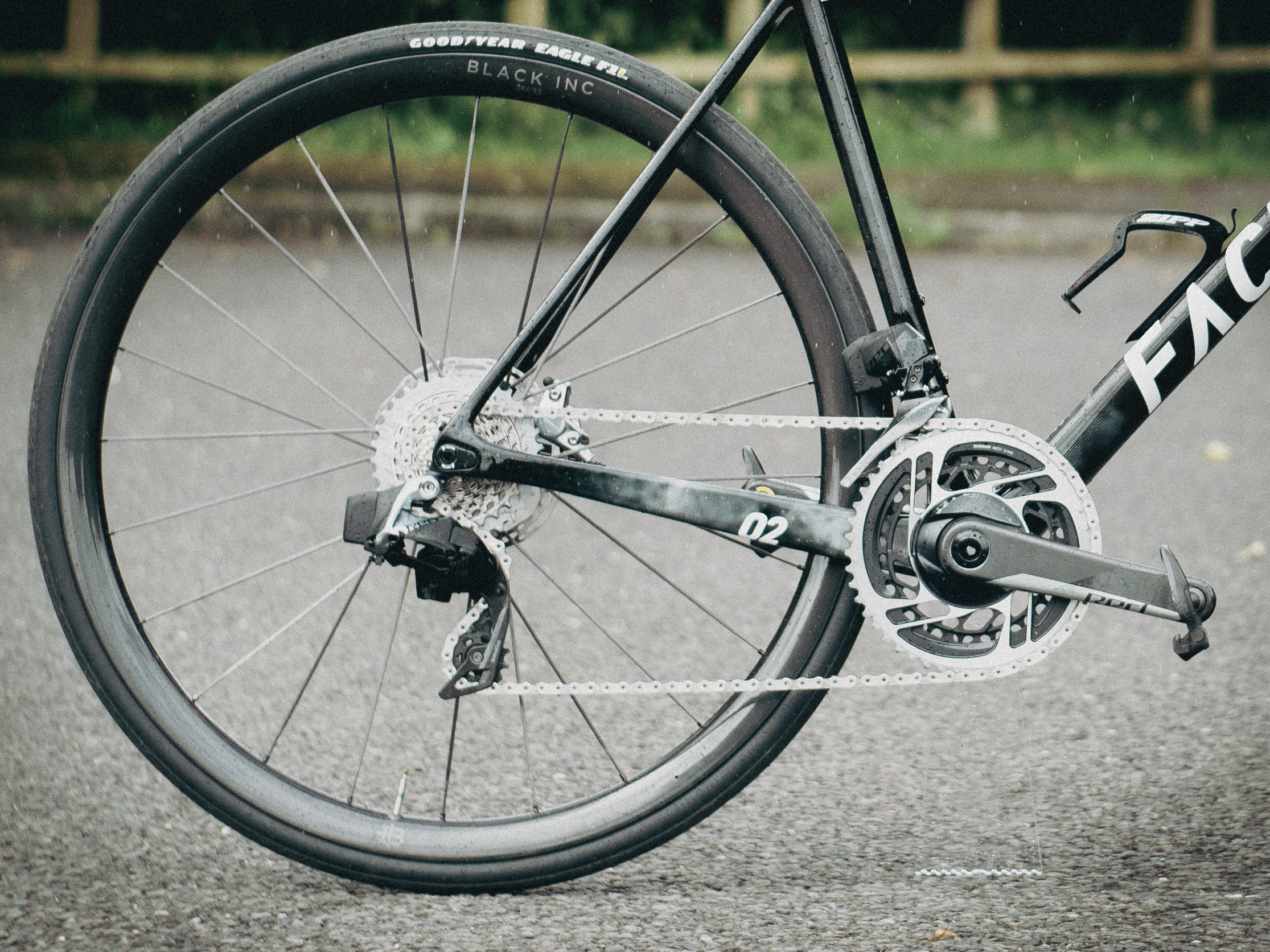
My model came fitted with a SRAM Red eTap AXS groupset. This provided an ideal setup for the mountainous terrain of the Alps, with its 48/35 double chainset and 10-33T cassette.
The one major thing my test bike lacks is a power meter. Given this model is £11,800 it feels crazy not to have one, but Factor gives you the choice of buying the bike with or without it. If you want the power meter, you'll need to spend more, bringing the price up to £12,200/$12,199/€11,699/AU$19,690. I personally would want it, but others who wouldn't will appreciate the choice and the associated cost saving, so that's not necessarily a negative. Equivalent Shimano builds don't get the option, though.
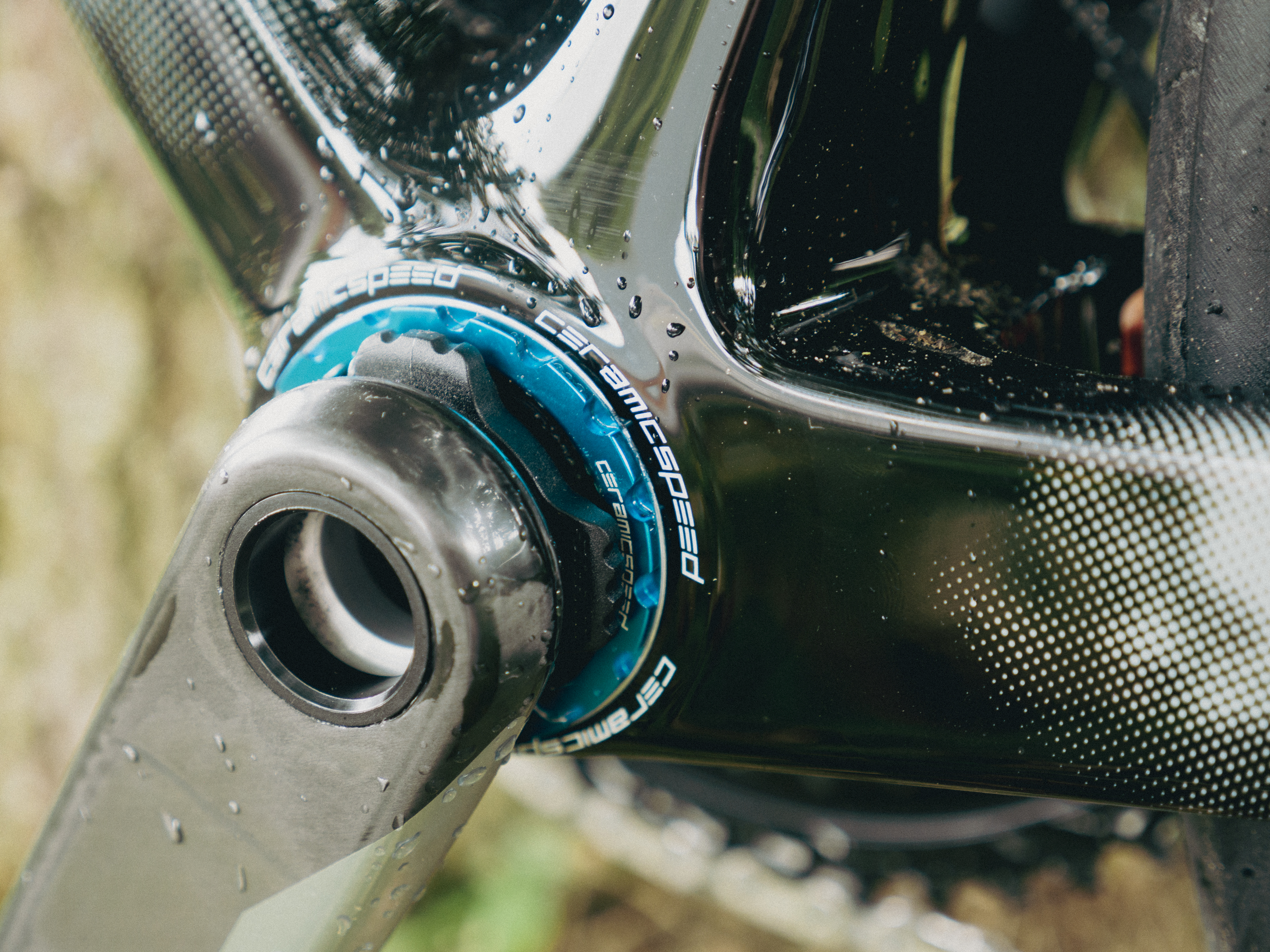
The O2 VAM has clearance for 32mm road tyres, which I think is more than ample for a bike of this nature. I certainly wouldn't want to take it off-road, even though the wheels are capable of doing so, as explained below.
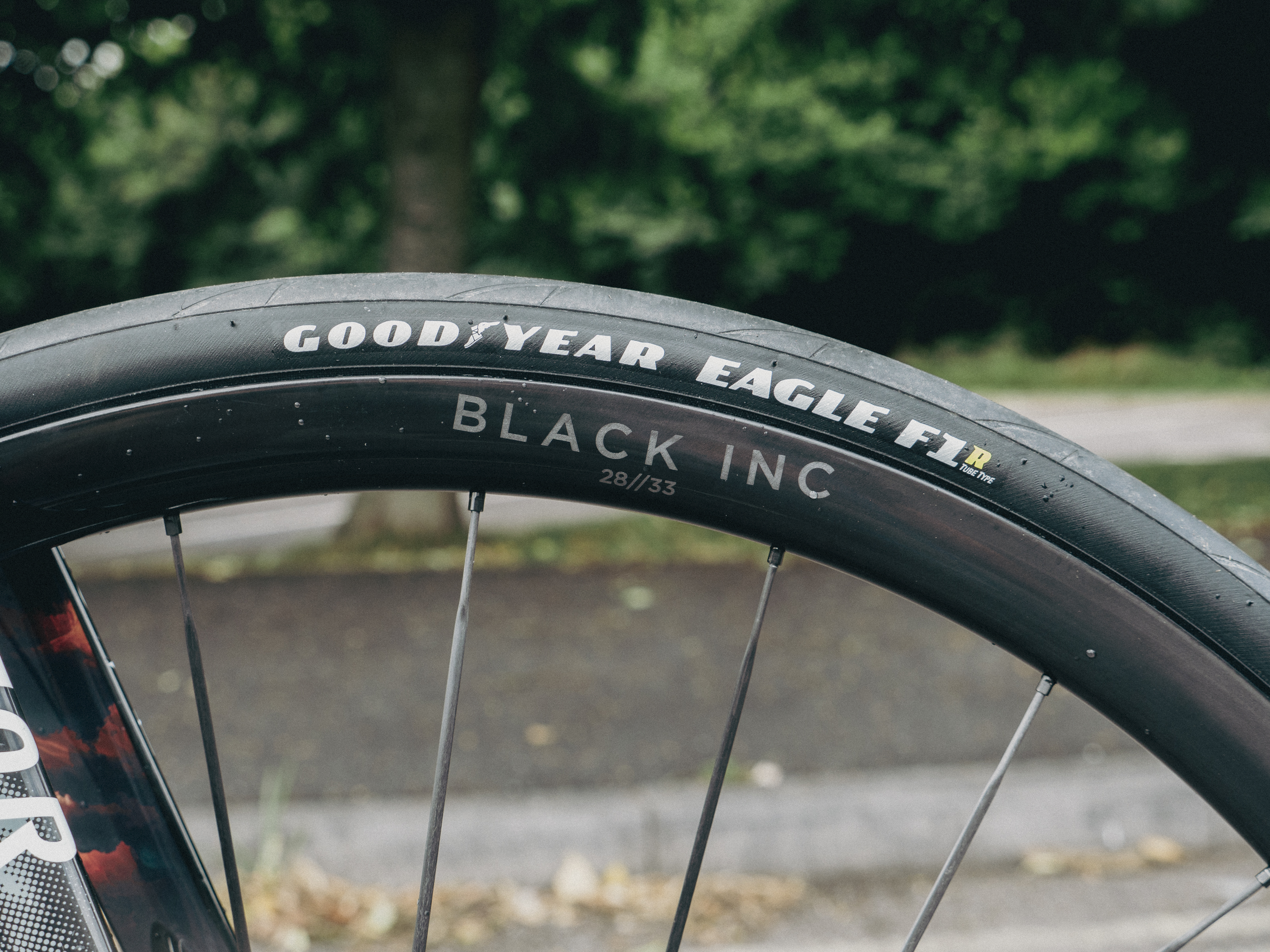
Despite the wheels being tubeless compatible and a set of tubeless valves being included, the bike comes set up with 28c Goodyear Eagle F1 R clincher tyres with butyl inner tubes. It would be nice to see the bike set up tubeless from the get-go, and I later swapped to tubeless using Continental's GP5000 TT TR tyres.
The wheels fitted are the hyper-lightweight Black Inc 28/33 which launched at the same time as the bike. At a pretty incredible 1,146g per pair, they come with no compromises to meet that weight. They feature a modern 23mm internal rim, and a hooked bead, and are optimised for 28mm tyres. They have bladed carbon spokes, albeit not quite as deep-sectioned as the spokes on the Cadex 50 Ultra wheels.
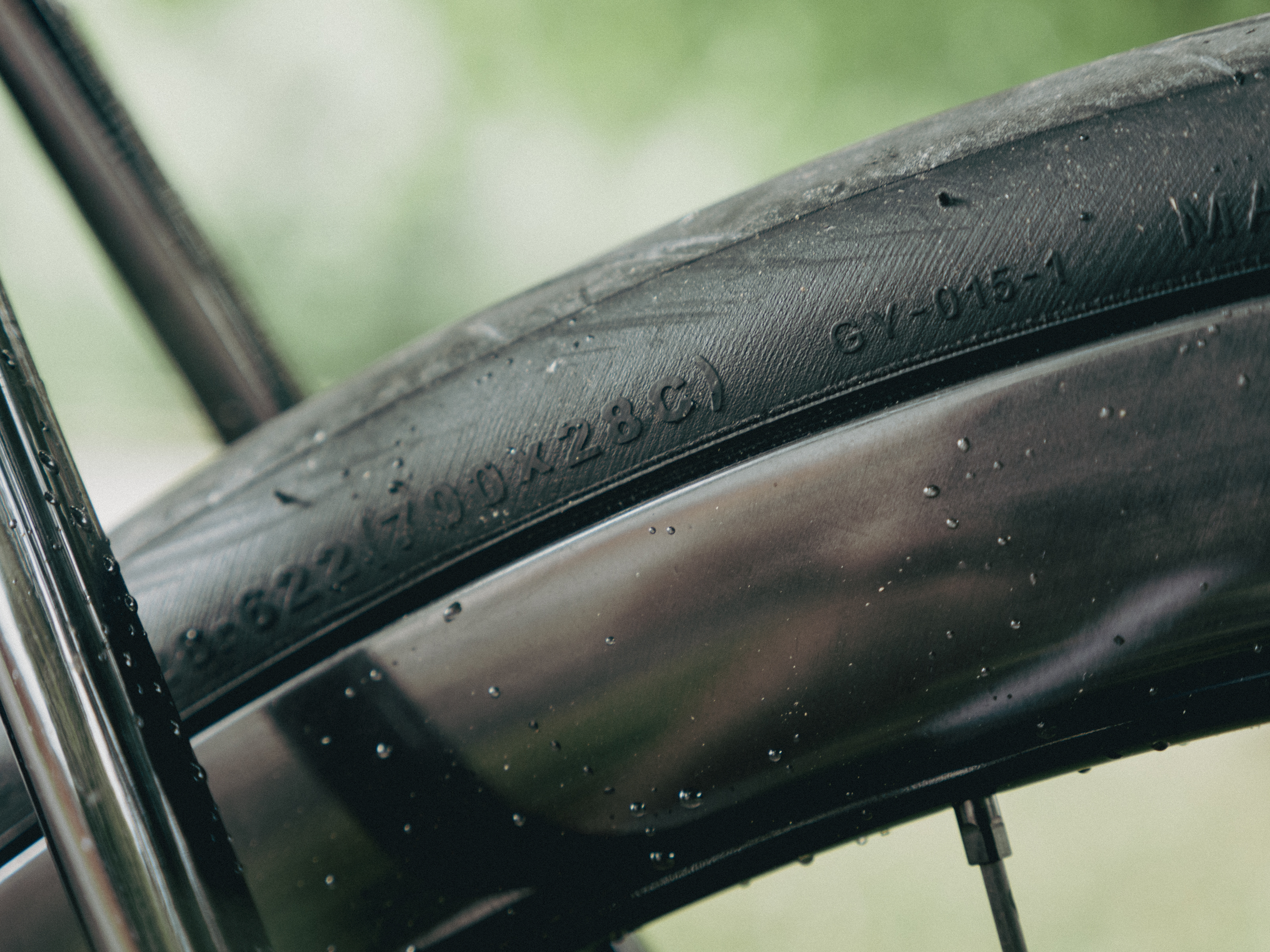
These wheels have by far the loudest freehub I've ever heard, it's borderline offensive. On descending the Route d'Avoriaz into Morzine, I pushed on to test the handling in the hairpins while a friend took it easy and she said she could still hear the buzz of the freehub long after I'd disappeared out of view. If you want to chat with the person next to you, you cannot stop pedalling or the freehub will stop you from hearing a word they say. With that said, it does have its positives. It serves as a good warning to pedestrians that you're coming, especially when using the bike in more built-up areas, on bike paths or in tourist hotspots, all of which are plentiful in my home city of Bath, UK.
Surprisingly, given their feathery weight, the wheels are absolutely solid. On one particular ride, I clanged the rim off a cattle grid and though I panicked thinking I'd managed to break them, there wasn't a mark to be found. They're officially road wheels, but Black Inc says they are "durable enough to handle rough roads as well as smooth tarmac" so to put this to the test, I mounted some Schwalbe gravel tyres and raced them in my local cyclocross league. I wouldn't suggest everyone did this, but I knew the course was just a mix of dry grass and tarmac, and they stood up to the test without missing a beat.
While the wheels stood up to my use and abuse, unfortunately, there have been a couple of issues with the frame – quality control issues, I suspect – that I can't ignore.
The first was a badly faced front disc brake mount. Paint overrun meant that it was impossible to set the front brake without it rubbing, but thankfully this was rectifiable with some sandpaper, rather than a trip to the bike shop.
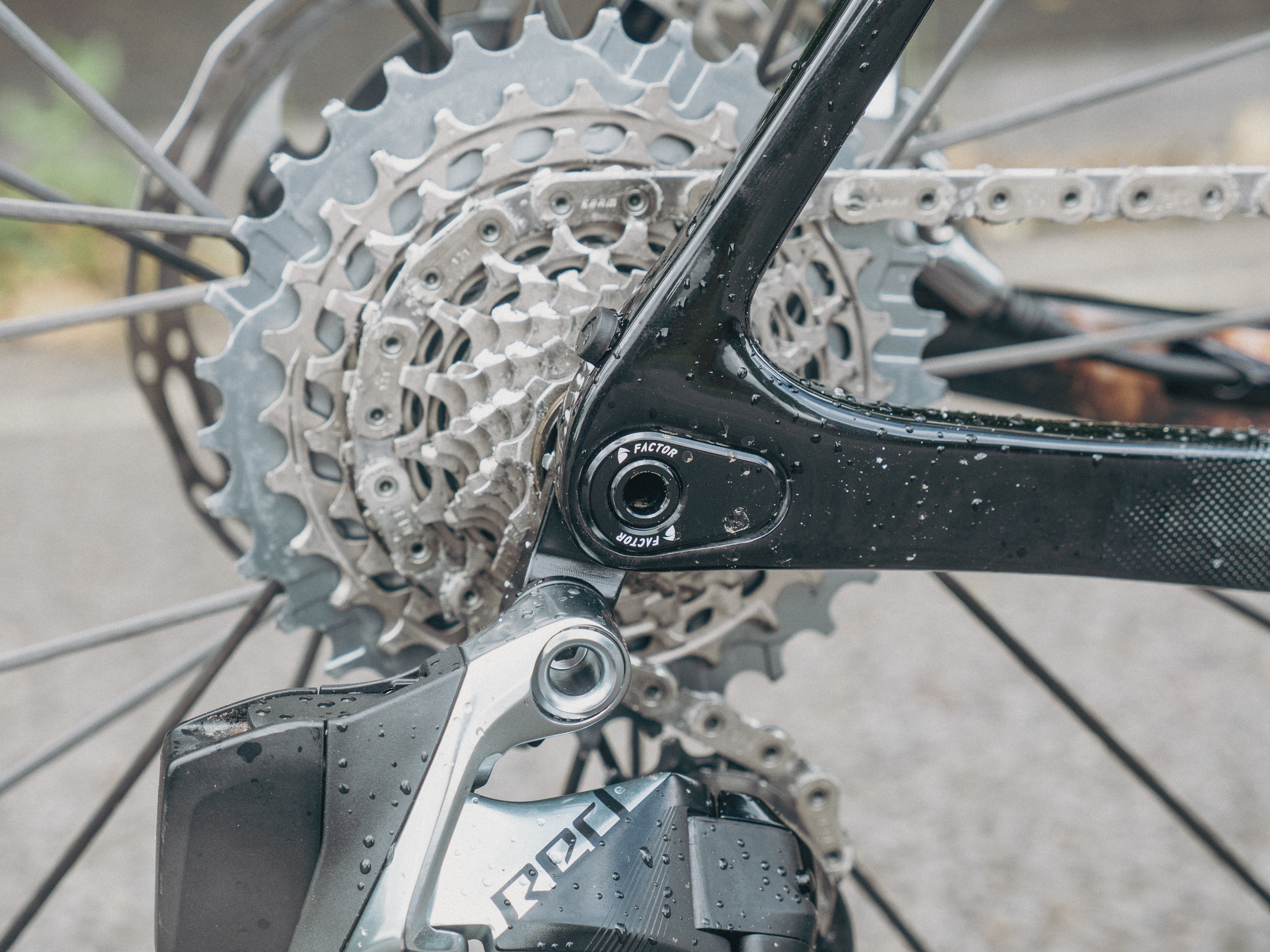
The second issue was related to the rear thru-axle and posed more of a concern. On the drive side dropout, the thru-axle screws into an alloy insert, shown above, which slots somewhat loosely into a recess on the outer face of the chainstay. When you fit the wheel, the thru-axle tightens everything up and it feels secure, but after a few minutes of riding, the insert would move around in its recess, meaning the thru-axle would move, and in turn, so would the wheel. Luckily nothing came undone, so the bike was safe for me to continue riding. I've not heard of anyone else having the same issue, and Factor's head of engineering, Graham Shrive, acknowledged that this would be an immediate warranty replacement, were I a paying customer.
My test bike arrived a few weeks prior to its public launch, so these issues are likely because it is an early production sample where there are often kinks to iron out. Regardless, I would suggest being vigilant if you're looking to buy one yourself.
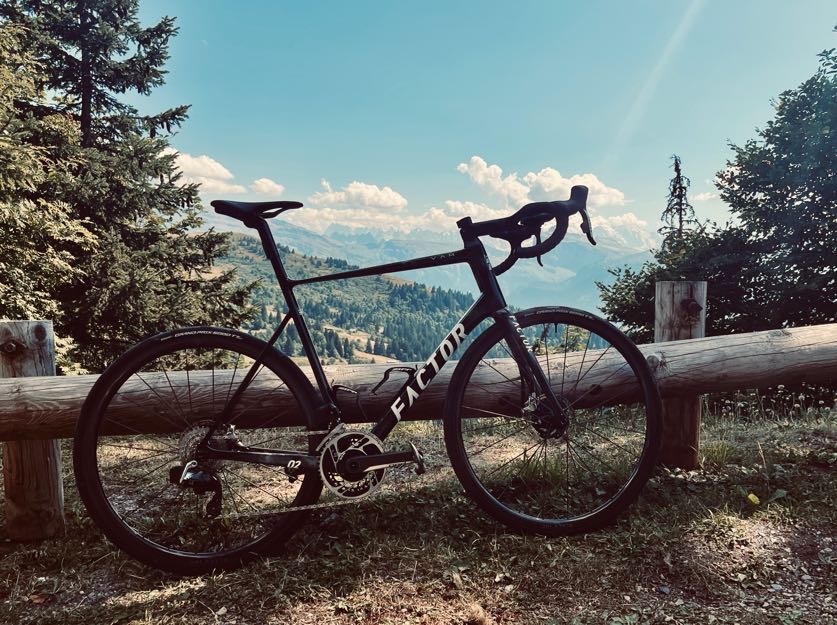
Performance
I tested the Factor O2 VAM over the span of three months. In the beginning, I used it for everything from the commute into the office to weekend long rides and the occasional lunchtime quick spin. In August, I took it for a week of riding in Morzine and the surrounding Alps with a newly launched road cycling holiday company, Treacle Velo. Since I've returned, I've continued using it for longer weekend rides, outdoor interval sessions and more, and I swapped wheels around to get a feel for both the O2 frame and the Black Inc wheels separately.
Unsurprisingly for a bike of this intent, the geometry is racy and aggressive. Compared to the outgoing model, the stack was raised by 10mm, but this puts it more in line with competitors' offerings.
| Size | 45 | 49 | 52 | 54 | 56 | 58 | 61 |
|---|---|---|---|---|---|---|---|
| STACK | 502 | 514 | 535 | 552 | 574 | 597 | 611 |
| REACH | 360 | 367 | 373 | 381 | 389 | 401 | 410 |
| HEAD TUBE LENGTH | 109 | 117 | 134 | 154 | 172 | 196 | 211 |
| HEAD TUBE ANGLE | 71.1° | 71.7° | 72.5° | 72.5° | 73.3° | 73.3° | 73.3° |
| BB HEIGHT | 273 | 273 | 273 | 275 | 275 | 275 | 275 |
| BB DROP | 72 | 72 | 72 | 70 | 70 | 70 | 70 |
| TRAIL (@690OD) | 58 | 58 | 58 | 58 | 58.6 | 58.6 | 58.6 |
| FORK LENGTH, FULL | 368 | 368 | 368 | 368 | 368 | 368 | 368 |
| FORK RAKE/OFFSET | 57 | 53 | 48 | 48 | 43 | 43 | 43 |
| FRONT CENTER | 574 | 573 | 573 | 587 | 587 | 608 | 621 |
| CHAINSTAY LENGTH | 405 | 405 | 405 | 405 | 405 | 408 | 410 |
| WHEELBASE | 970 | 969 | 971 | 985 | 987 | 1006 | 1022 |
| TOP TUBE LENGTH, HORIZONTAL | 493 | 510 | 527 | 539 | 557 | 578 | 591 |
| BIKE STAND OVER HEIGHT | 713 | 728 | 759 | 784 | 809 | 830 | 848 |
| SEAT TUBE LENGTH | 560 | 580 | 620 | 650 | 680 | 700 | 720 |
| SEAT TUBE ANGLE | 75.5° | 74.5° | 74° | 74° | 73.5° | 73.5° | 73.5° |
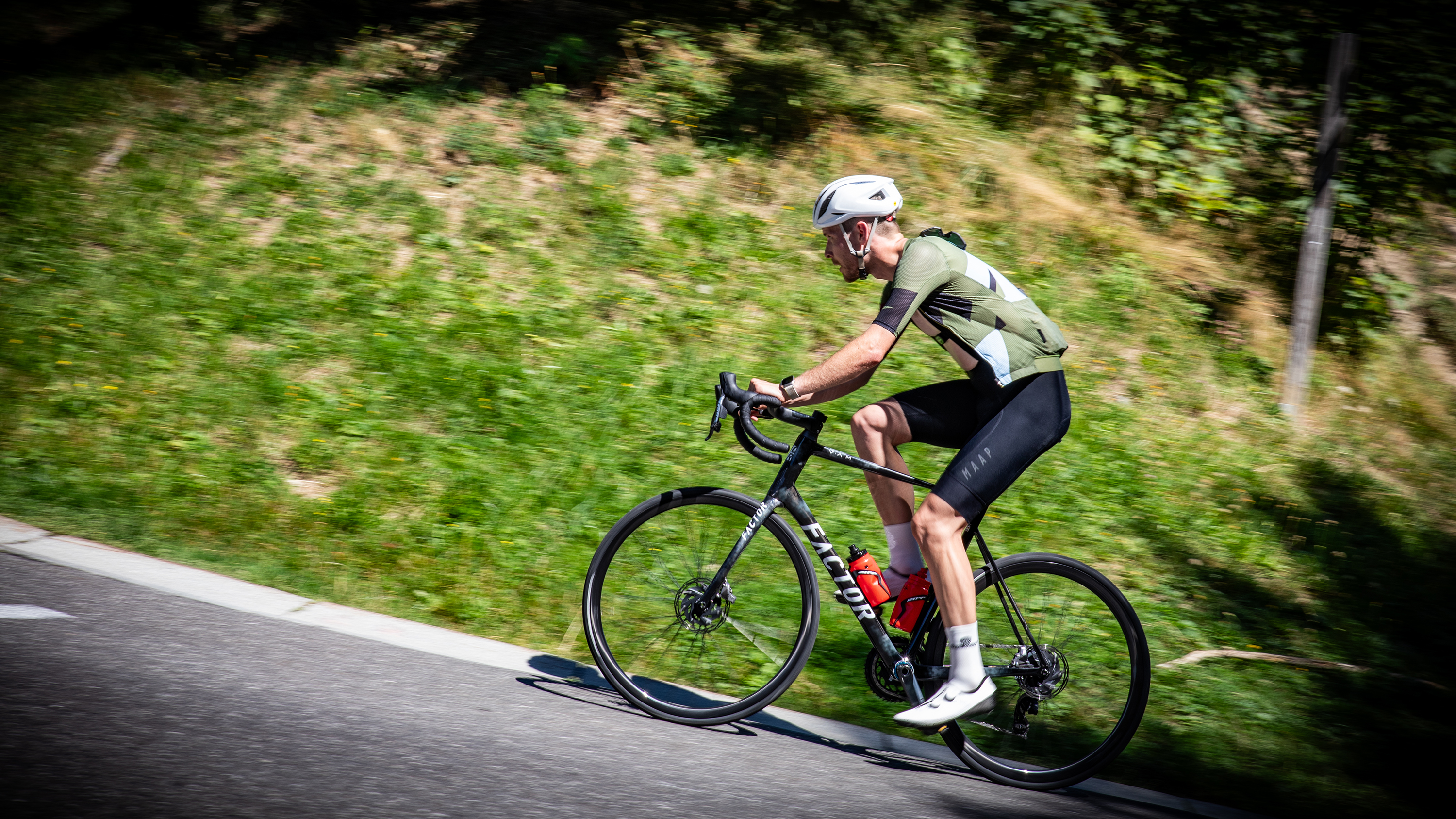
In ride quality terms, I have nothing but good things to say about the O2 VAM.
Naturally, it excels most when the road points up. With the feathery weight of the frame and the Black Inc 28//33 wheels paired with the wide gearing offered by the SRAM Red groupset, it was an excellent tool for flattening the mountainous terrain. Despite my usual disdain for climbing, I found myself enjoying the ups as well as the downs.
The narrow cockpit and featherweight front wheel mean that steering input feels incredibly light and immediate. So much so that to begin with, it actually felt twitchy and I struggled to build confidence in the corners. Despite very similar geometry charts, this is in stark contrast to the S-Works Tarmac SL8 which, despite only riding it for a few hours, I felt immediately confident on.
But after lowering the stem and swapping to a new set of tyres (Continental GP5000 TT TR, set up tubeless), the bike came into its own on the descents, too. On the warm dry roads of the French Alps, I learned to trust it far more than any other I've tested lately, and the twisting mountain descents enabled me to push the handling further than my home roads generally permit.
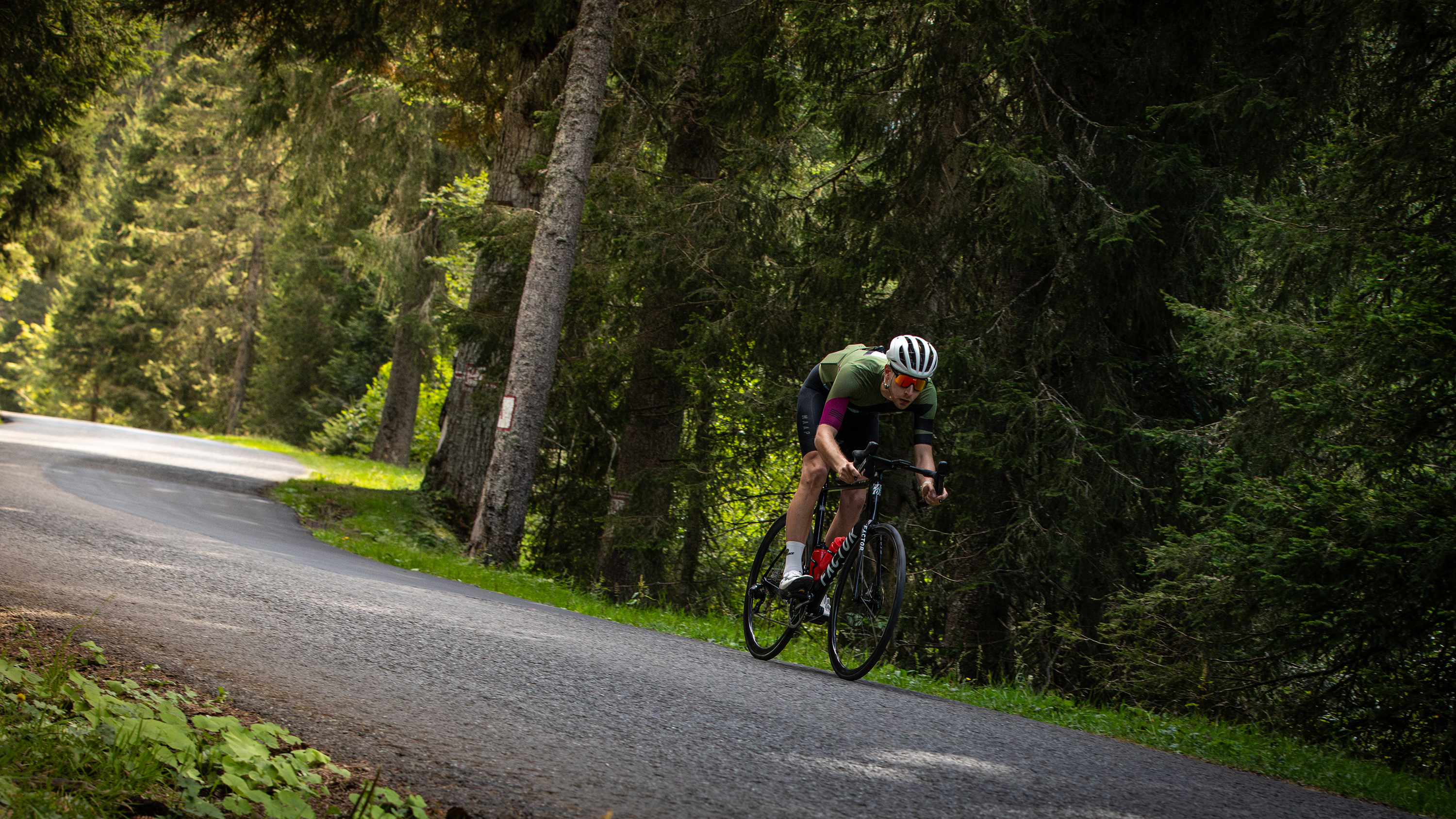
I was entering hairpins far quicker than my usual comfort zone, and hitting speeds of over 85km/h on the straights. The GP5000 tyres offered incredible grip and speed, the handling was fast and sharp, and the minimal weight and lightweight wheels meant punching up to speed again after exiting corners was nice and easy.
On flatter terrain, the aero touches were appreciated. I can't profess to be able to 'feel' their effect in real time, beyond anecdotally saying that the bike was quick to get up to speed, and held it well. The shallow wheels and the shallow frame tubes also meant the bike was largely unaffected by crosswinds.
With that said, given not many of my rides involve double-digit gradients, I would still prefer deeper wheels. I really like these wheels, but I expect most people would see a greater overall benefit from an aero wheelset unless targeting a specific event.
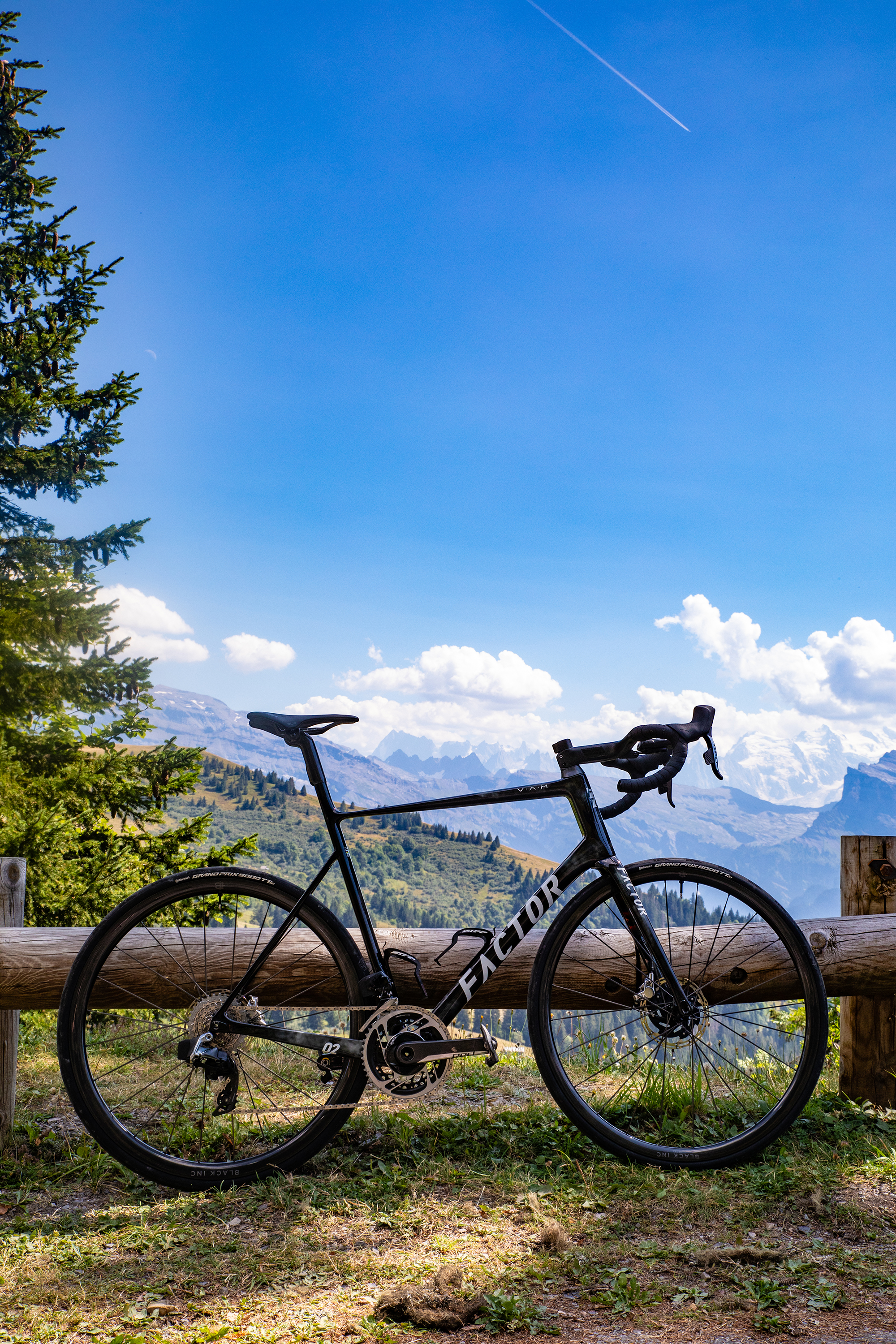
Value
It's always difficult to talk about the value proposition of a bike when the price tag is £11,800, because no matter the manufacturer or the bike being offered, it's a ridiculous sum of money.
When comparing the Factor against its similarly-priced peers, the value proposition of the O2 VAM can be viewed in one of two ways. When you look at the bike as a sum of its parts, you can make a case that it offers fairly decent value despite the high price tag. Through a wider lens, however, when considering the intentions of the bike, it's a niche bike with a narrow use case, so the versatility it provides might reduce the value proposition somewhat.
To explain that further, the O2 VAM is a top-tier race bike with high-end carbon fibre construction, modern design considerations, a SRAM Red groupset, best-in-class lightweight wheels and a truly stunning one-piece cockpit. To get that for £11,800 – or £12,200 with a power meter – is pretty much in line with competitors. When you consider that you get to choose your bar/stem, saddle setback and even the paint as part of the purchase, I could argue that it's actually better value than, say, an S-Works Tarmac or a Trek Emonda SLR 9.
But when you consider the bike as a whole, the O2 VAM is a dedicated lightweight bike. It's comfortable to ride and great in the mountains, but the Ostro VAM is more of an all-rounder that I believe would suit most people's riding habits more and be better for most racers (at least those who buy their bikes and can't have both).
And perhaps a rogue addition, the OSTRO Gravel offers all the stiffness of a race bike, with aggressive geometry and aero tubing, as well as the tyre clearance and durability to take on a wider range of terrain.
With their intentions laid out, it's hard to see the O2 VAM as offering great value or versatility for the investment.
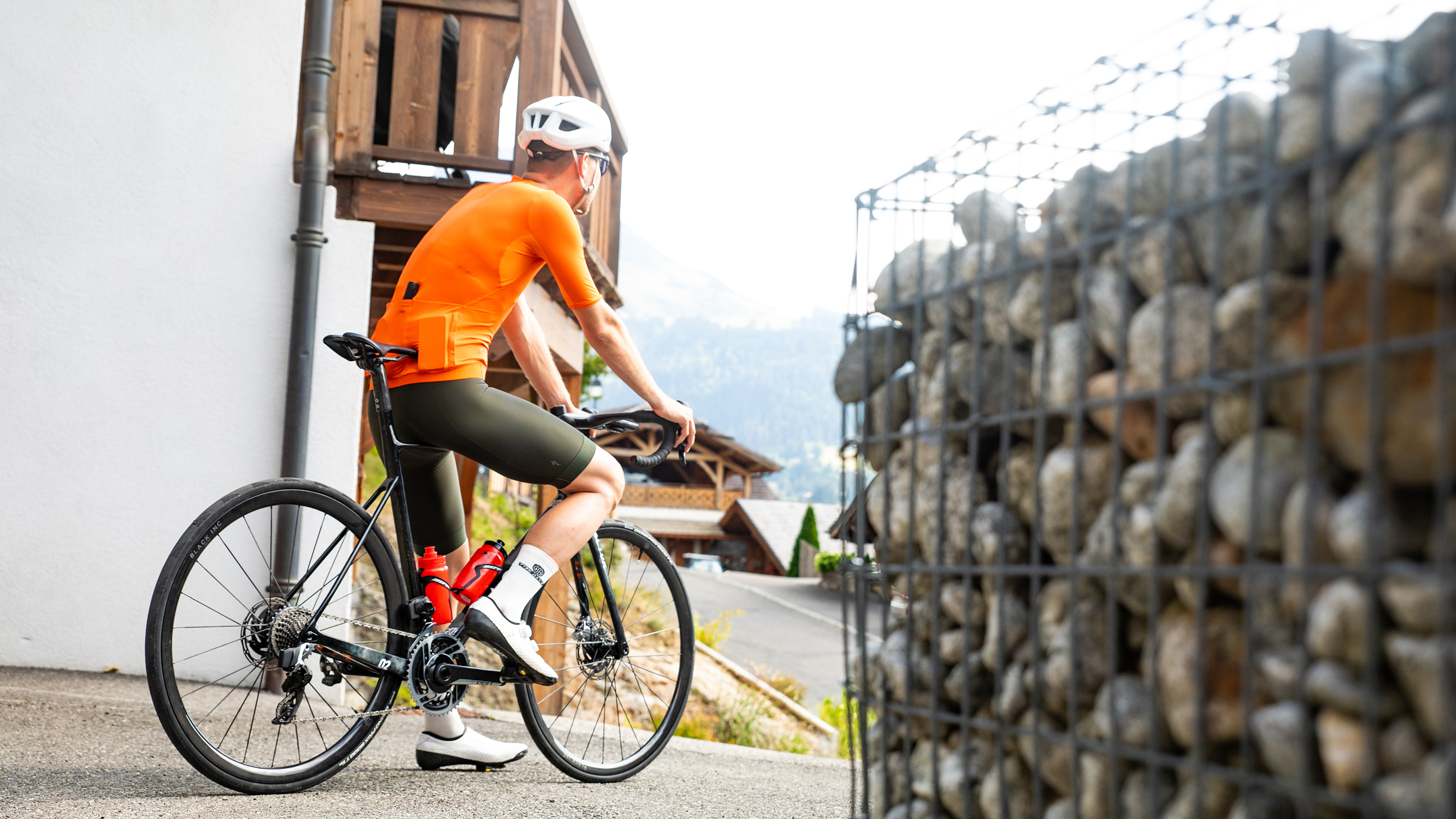
Verdict
If you do decide to choose the O2 VAM, I'm confident you'll be happy with the bike. The QC issues aside, it's a genuinely great bike that flattens climbs and can easily hold its own on flat or downhill terrain.
For racers, or those who care about the aero savings and outright performance, the more aero Ostro VAM will be the better bike for you despite being a few hundred grams heavier. I'd wager that most people will see a greater time saving from that bike's aero benefit than they'd get from the weight saving here.
However, with that said, this bike offers something extra. Something greater than the mathematical confirmation that you'll get to your destination a handful of minutes faster. As a featherweight bike, it's a bit more fun to ride.
Does it matter to you if you're home at 15:00 or 15:03? If not, take the bike that'll make cycling that little bit more enjoyable. That's not to say the Ostro isn't fun, but in my experience, the O2 VAM is another step up.

| Design and aesthetics | 9/10 | There are some decisive design choices such as the slimming top tube, unfinished seatstay junction and seatmast, but overall it looks great, even with the tall head tube on this 58cm. You can customise colours when buying too, so there's not much to complain about. |
| Build | 7/10 | Again, the customisation options here are a good thing, especially relating to cockpit fit. The lack of power meter is a shame on this model, but you can pay to have it. The tube-type tyres are an mis-step on spec too. I also can't ignore the build quality concerns, but it's reassuring that Factor would warranty the issue I experienced. |
| Performance, handling and geometry | 9/10 | Handling mimics the best race bikes in this class, and the climbing prowess is hard to beat. I felt it had slightly jittery handling at first, but overall it's a solid performer. |
| Weight | 10/10 | One of the lightest race bikes in its class without any weight-saving compromises. The wheels are durable, the cockpit is aero, it has disc brakes. |
| Value | 8/10 | Depends how you look at it. As a sum of its parts, it's in line with its competitors while offering better buying configuration. It is a niche bike though, so doesn't provide much 'all-rounder' versatility that might improve the value proposition. |
| Overall | 86% | Row 5 - Cell 2 |

Josh is Associate Editor of Cyclingnews – leading our content on the best bikes, kit and the latest breaking tech stories from the pro peloton. He has been with us since the summer of 2019 and throughout that time he's covered everything from buyer's guides and deals to the latest tech news and reviews.
On the bike, Josh has been riding and racing for over 15 years. He started out racing cross country in his teens back when 26-inch wheels and triple chainsets were still mainstream, but he found favour in road racing in his early 20s, racing at a local and national level for Somerset-based Team Tor 2000. These days he rides indoors for convenience and fitness, and outdoors for fun on road, gravel, 'cross and cross-country bikes, the latter usually with his two dogs in tow.
